Before we begin with deep core exercises, a robust core is integral to overall health and fitness, serving as the body's central support system. A deep core exercises enhances stability, posture, and balance, reducing the risk of injuries and supporting daily activities. Unfortunately, the significance of core strength is often overlooked. Many focus solely on visible abdominal muscles, neglecting the deeper core muscles crucial for internal stability.
This oversight can lead to imbalances, compromised posture, and increased vulnerability to back issues. Recognizing the comprehensive role of deep core muscles is essential for a well-rounded fitness approach and optimal physical well-being.
Understanding The Core Muscles
Deep core muscles, situated beneath superficial muscles, differ significantly in function. While superficial muscles are visible and responsible for movement, deep core muscles focus on internal stabilization.
The deep core consists of the transverse abdominis, forming a natural corset for spinal support, multifidus muscles stabilizing the spine, and pelvic floor muscles aiding in core stability. In contrast, superficial muscles like the rectus abdominis and obliques are visible and drive movements like flexion and rotation.
Recognizing this contrast is vital for a well-rounded fitness routine, ensuring both muscle groups are targeted.
Deep core muscles provide:
The Importance Of Targeting Deep Core Muscles
Recognizing the vital role of targeting deep core muscles is essential for achieving holistic physical stability. These internal anchors, such as the transverse abdominis, multifidus, and pelvic floor muscles, form the body's foundation.
Focusing on these often-overlooked areas goes beyond aesthetic concerns, building a resilient core that boosts overall stability, reinforces posture, and lowers the risk of injuries. Unfortunately, the significance of deep core muscles is frequently downplayed in favor of more visible groups. Prioritizing these internal stabilizers through a holistic fitness approach is crucial for cultivating enduring strength and resilience.
Benefits Of Strong Deep Core Exercise
1. Improved Posture And Body Alignment
Strengthening deep core muscles is pivotal in supporting internal structures, resulting in improved posture and body alignment. This internal support system helps maintain a more upright and aligned stance, reducing the risk of musculoskeletal imbalances.
2. Enhanced Stability And Balance
Deep core engagement fosters increased stability and balance by providing a solid foundation for movements. This improved stability is particularly beneficial during activities that require controlled and balanced motions, contributing to an overall more secure physical state.
3. Prevention Of Lower Back Pain And Injuries
Reinforcing the spine and surrounding structures through deep core exercise strength is crucial for preventing lower back pain and injuries. By providing support to the lumbar region, deep core muscles contribute to the resilience of the back, reducing the likelihood of strains and injuries.
4. Contribution To Overall Athletic Performance
Strong deep core muscles act as a stabilizing force, significantly contributing to overall athletic performance. This stability enhances the efficiency and effectiveness of dynamic movements, making it a foundational element for athletes across various sports and activities.
5. Improved Breathing And Diaphragm Function
A strong deep core positively influences respiratory function by supporting the diaphragm, the primary muscle involved in breathing. Deep core strength allows better control of the diaphragm's movements, improving lung capacity and more efficient oxygen exchange. This can enhance endurance during physical activities and contribute to overall respiratory health.
6. Reduced Risk of Pelvic Floor Issues
The deep core muscles, including those around the pelvic floor, are crucial in providing stability to the pelvic region. Strengthening these muscles can help prevent or relieve issues like pelvic floor dysfunction, incontinence, and other related problems. This is particularly important for women during and after pregnancy, as well as for individuals of all genders as they age.
9 Effective Deep Core Exercises
1. Abdominal Activation
For this deep core exercise, you can use an exercise bed.
Lie on your back with your knees bent and feet flat, relaxing your neck and upper body. Breathe in, place your hands on your thighs and as you exhale, gently tighten your core muscles. Hold the contraction for a few seconds and release. Relax your core and repeat the movement. Start with 1 set of 5 repetitions.
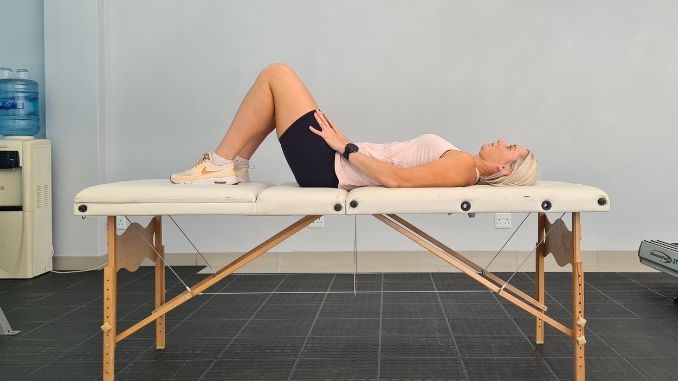
2. Bird-Dog
For this deep core exercise, firstly begin in a 4-point position with your hands underneath your shoulders and your knees underneath your hips. Engage your core. Take a deep breath and lift your left arm to form a straight line with your shoulder as you extend your right leg behind your body. Keeping your hips and shoulders parallel to the floor. Return to the starting position and repeat the movement on the opposite side, alternating directions.
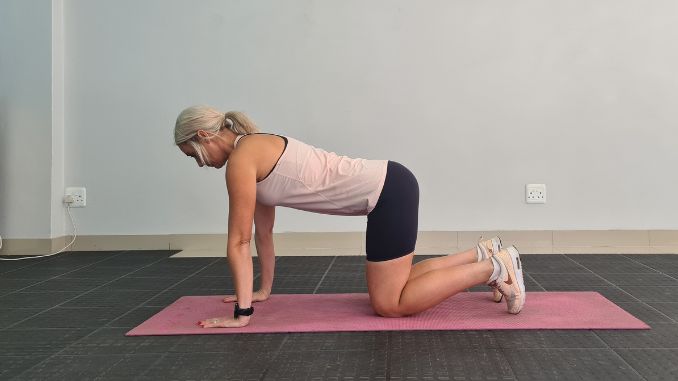
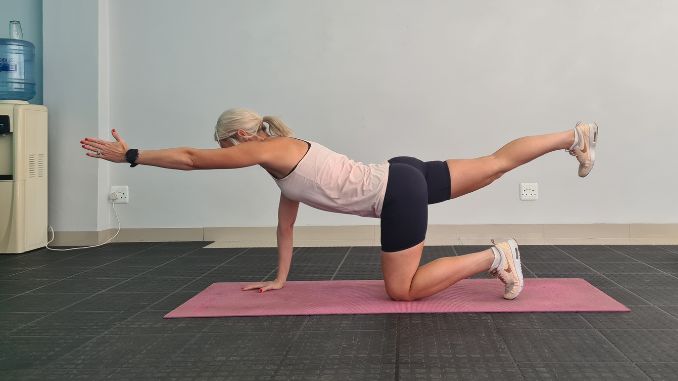
3. Breaststroke
Lie on your stomach with your feet hip-width apart, while maintaining good alignment with your head, shoulders, hips, and legs. Rest your forehead on your bent arms or place your hands at your sides at chest level.
Engage your core. Pull through your mid back to lift your legs and arms off the floor, squeezing your shoulder blades together. Relax and return to the starting position. Perform this exercise in a smooth and controlled movement, completing 5 repetitions.
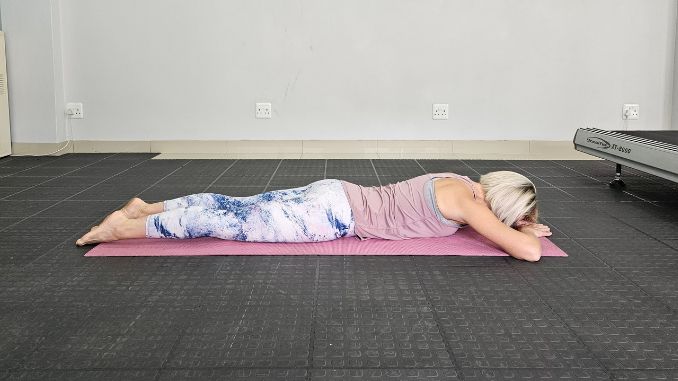
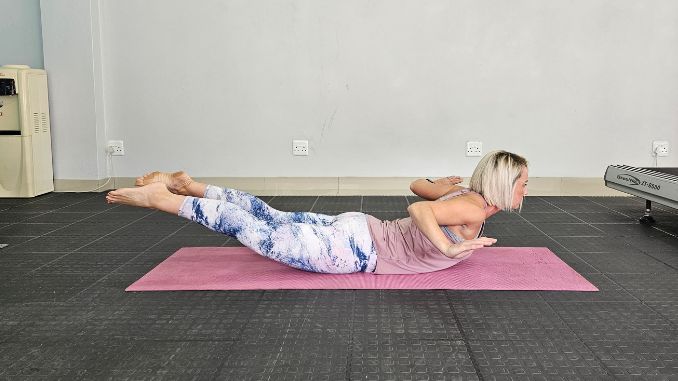
4. Forearm Plank
Begin deep core exercises move into a forearm plank position with your feet hip-width apart, while maintaining a good alignment with your head, shoulders, hips, and legs. Engage your core, glutes, and hamstrings. Lastly, hold this position for a couple of seconds and then relax. Complete 5 repetitions.
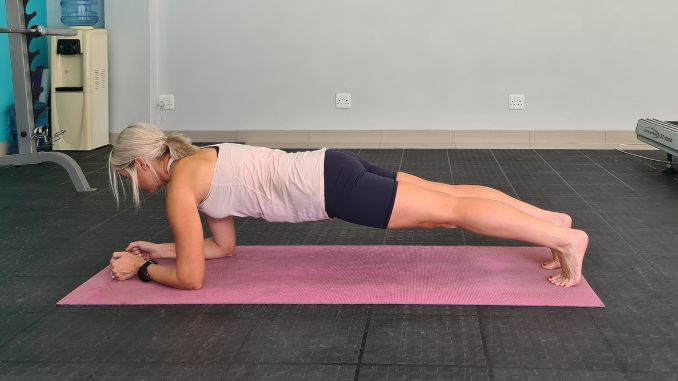
5. Straight-Arm Side Plank
Firstly, move into a straight-arm plank position, while maintaining good alignment with your head, shoulder, hips, and legs. Keep your core tight and rotate your body to the right to move into a side plank position, placing your left leg on top of the right.
Hold this position for a few seconds. Lastly, take several deep belly breaths in through your nose and out through your mouth. Relax and return to the starting position. Switch sides to repeat the movement.
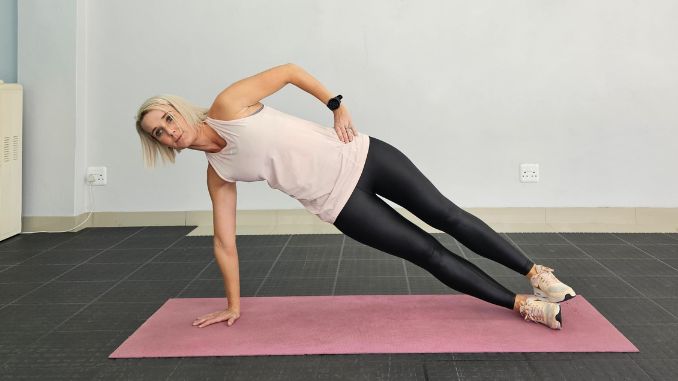
6. Mountain Climbers
Begin this deep core exercise, in an upright standing position. Bend your knees and hinge from your hips to lower your hands to the floor. Secondly, take a step back with both feet to move into a straight-arm plank position.
Bend your left knee and lift to chest height. Lastly, step back to the plank position and repeat the movement with your opposite knee. Repeat the movement, alternating knees in a climbing motion.
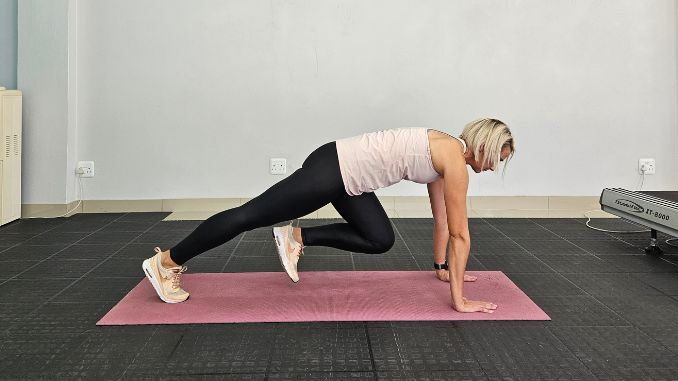
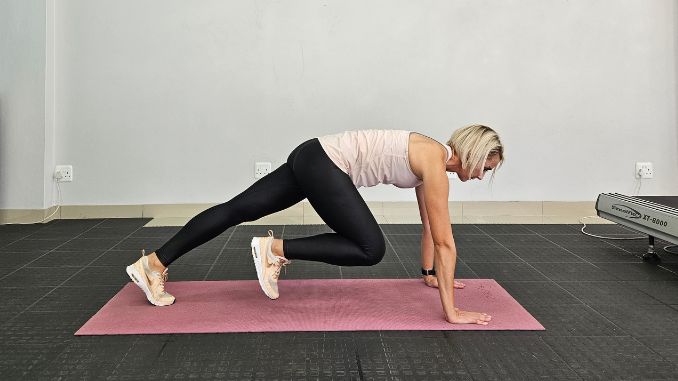
7. Bridge With Weights
For this exercise, you can use an exercise bed and dumbbell for your weights.
Firstly, lie on your back with your knees bent and your feet flat on the exercise bed or floor. Tighten your abdominal area. Place a dumbbell on your abdominal area for added weight and resistance.
Push from your heels to lift your hips, while maintaining good alignment with your head, shoulders, and hips. Hold the position for a couple of seconds. Lastly, lower your hips back down, relaxing the abdominal area. Repeat the movement.
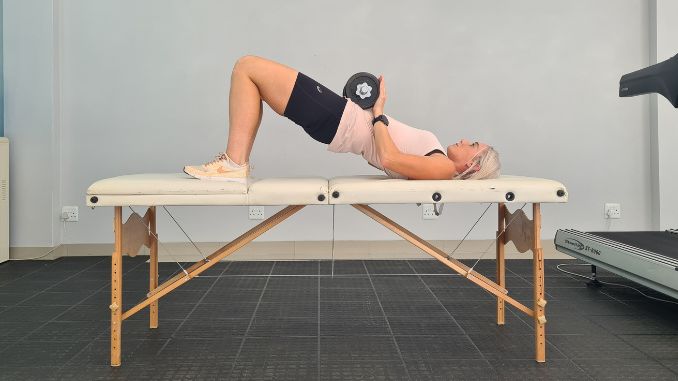
8. Roll Downs
Begin this deep core exercise, in an upright sitting position on the floor with your knees bent and toes raised toward the ceiling. Secondly, place your hands under your thighs and tuck your tailbone as you engage your core. Take a deep belly breath, then slowly roll your spine down towards the floor, one vertebra at a time.
Lengthen your body at the end position by doing a full-body stretch, reaching through your fingertips and toes. Hold the position for a couple of seconds. Lastly, exhale and reverse the movement to return to the starting position. Repeat the movement for 6-10 repetitions.
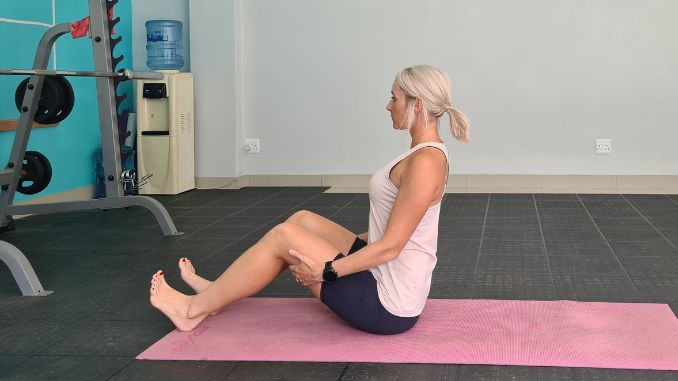
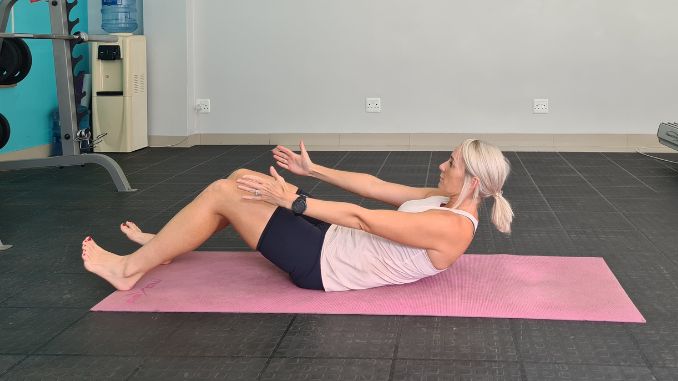
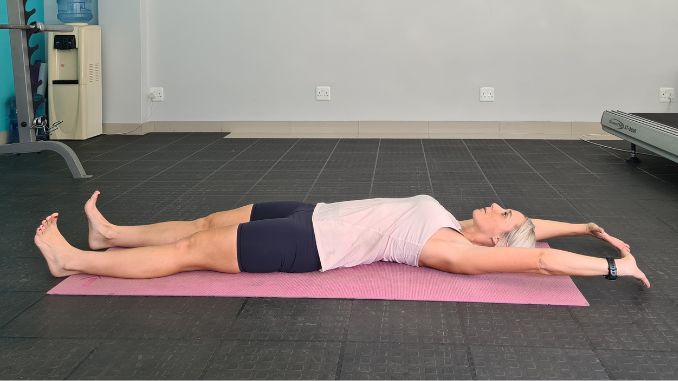
9. Stir the Pot
Start deep core exercises in an upright kneeling position with the yoga ball in front of your body. Move into a forearm plank position, resting your elbows on top of the ball, and maintaining good alignment with your head, shoulders, hips, and knees. Contract your core and move the yoga ball in a circular motion using your elbows. Repeat the movement in the opposite direction.
Perform the exercise for about 1-2 minutes or as long as it feels comfortable and effective. Gradually increase the duration and difficulty of the exercise as your comfort and core stability improves.
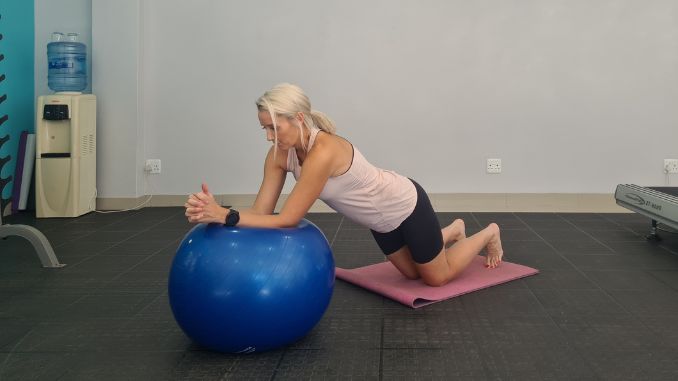
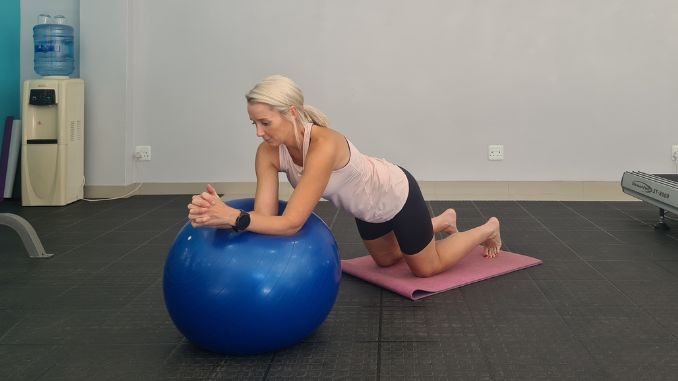
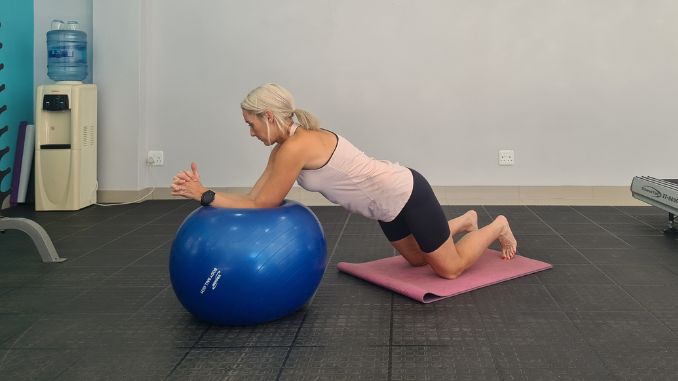
Engage Core Through Various Activities
Improving core muscles is crucial for overall stability, balance, and functional movement. Aside from traditional deep core exercises like crunches and planks, there are various activities that can help strengthen and keep the core engaged.
Here are some options:
Yoga
Yoga is a mind-body practice that combines physical postures, breath control, and meditation. Many yoga poses, such as the Boat Pose, Plank, and Side Plank, focus on building core strength through controlled movements and sustained holds, promoting both flexibility and stability.
Pilates
Pilates is a low-impact exercise system designed to improve flexibility, strength, and body awareness. Centered around the core, Pilates engages muscles through precise movements and emphasizes the importance of breath control. Exercises often target the abdominal muscles, lower back, and pelvic floor to enhance overall core stability.
Elements
Swimming is a full-body workout that provides cardiovascular benefits while simultaneously engaging the core muscles. The resistance of water requires constant core activation to maintain a streamlined body position and perform efficient strokes, making it an excellent activity for building strength and endurance in the core region.
Cycling
Cycling is a low-impact aerobic exercise that not only targets the lower body but also engages the core for stability. Whether cycling outdoors or using a stationary bike, the act of balancing on the bike activates abdominal and lower back muscles, contributing to overall core strength and endurance.
Dancing
Dancing involves dynamic movements that require coordination, balance, and core strength. Various dance styles, from salsa to hip-hop, engage the core muscles as you move, turn, and maintain proper posture, providing an enjoyable way to enhance both cardiovascular fitness and core strength.
Rowing
Rowing, whether on water or using a rowing machine, is a full-body workout that particularly targets the back, arms, and core. The pulling motion engages the muscles of the abdomen and lower back, requiring core strength for stability and efficient rowing technique.
Functional Training
Functional training involves exercises that mimic real-life movements, incorporating multiple muscle groups, including the core. Squats, lunges, and weight-carrying exercises challenge the core's stability and strength in a way that translates to improved daily activities.
Rock Climbing
Rock climbing is a physically demanding activity that engages the entire body, with a strong emphasis on the core. Climbers use their abdominal and back muscles to stabilize themselves on the wall, making it an effective way to build core strength while enjoying an adventurous and challenging pursuit.
TRX Suspension Training
TRX uses suspension straps to perform a variety of bodyweight exercises that target multiple muscle groups, including the core. The instability of the straps requires constant engagement of the core muscles to stabilize the body during exercises like planks, rows, and squats.
Martial Arts
Martial arts training involves a combination of kicks, punches, and defensive maneuvers that require core strength for balance and power. Whether practicing karate, kickboxing, or Brazilian jiu-jitsu, the core muscles play a crucial role in executing techniques effectively and maintaining stability during movements.
Trail Running
Trail running is an outdoor activity that not only provides the cardiovascular benefits of running but also uniquely engages the core muscles. Navigating uneven terrain and elevation changes requires constant adjustments in body position, activating the core to maintain stability and control. Trail running offers a dynamic and challenging way to strengthen the core while enjoying the beauty of nature.
Conclusion
Deep core exercises, often overshadowed by six-pack pursuits, are essential for stability, posture, and injury prevention. These hidden muscles form the core's foundation, impacting everything from athletic performance to everyday activities.
This guide offers a range of deep core exercises, from basic activation to dynamic movements, that target these crucial muscles. Regularly incorporating them into your routine strengthens your core, leading to better posture, reduced back pain risk, and a foundation for overall fitness.
Remember, listen to your body. Start slow, take breaks, and consider consulting a corrective exercise specialist to tailor your core training for optimal results. Embrace the journey and unleash your core's true potential at your own pace.
The core is really the key to better balance and better “everyday” strength because your core supports basically every movement your body makes.
Check out our 10 Easy Movements For A Stronger Core just for you!

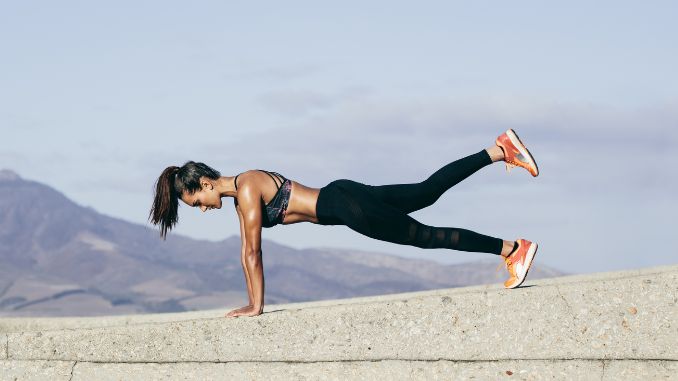
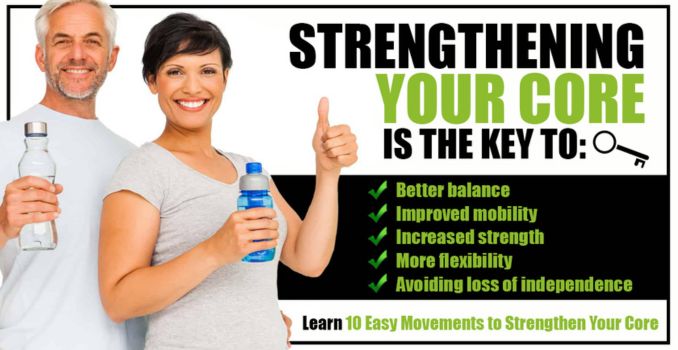
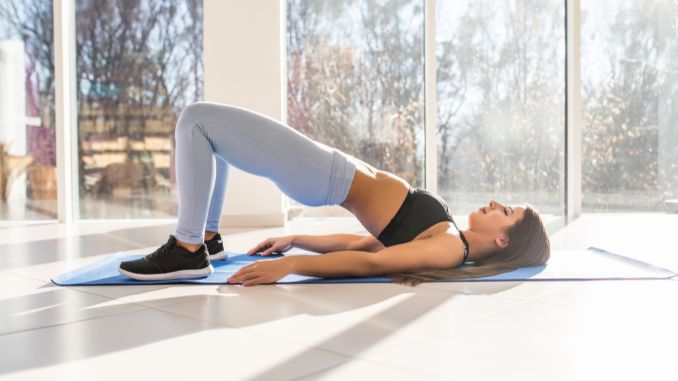
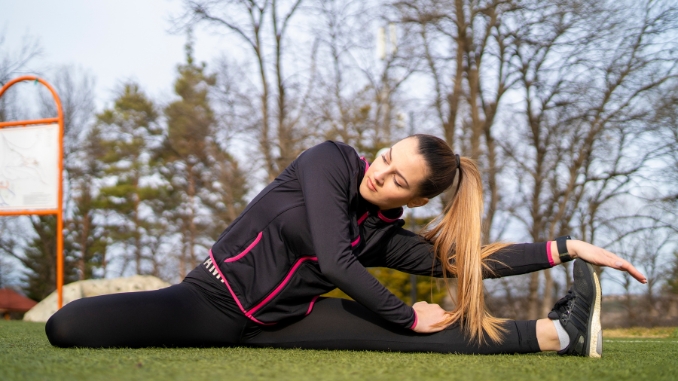

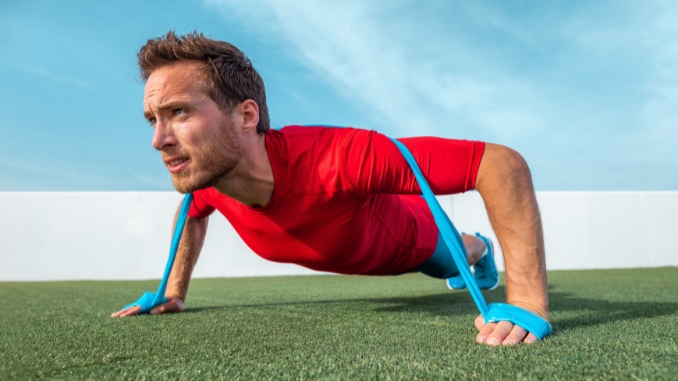
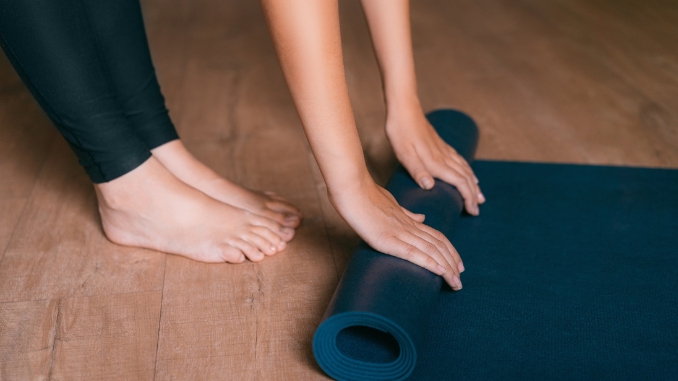
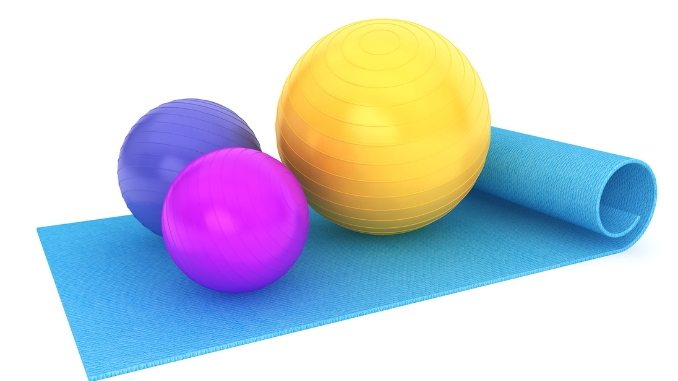
Pingback: Horse Stance Benefits